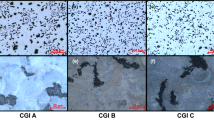Abstract
In recent years, the use of integrated sensors in stamping tools has strongly increased. Due to this, the opportunity rises to expand monitoring systems from providing simple differentiations between sufficient and insufficient process conditions or the detection of tool failure towards a detailed process understanding based on characteristic parameters describing the current process condition. Therefore, it is necessary to correlate sensor signals with tool and process parameters. However, most of these correlations are not investigated for stamping processes. Due to this, an investigation of correlations is essential to increase the benefits of current process monitoring systems. The aim of this paper is to establish further gradations for the current process condition to increase process stability. Furthermore, process disturbances or tool failures can be detected and upcoming tool changes will be predictable. A first approach is to evaluate correlations between sensor information, like force measurements, and wear mechanisms. This paper presents an approach for the determination of characteristic wear parameters by using the information provided by integrated force sensors. Furthermore, the parameters are established and correlated with wear phenomena on the tool. For the correlation analysis of the measurement and the current state of wear, the active elements of the tool are removed and the surface is measured by a scanning electron microscope (SEM) and a confocal white light microscope to investigate the 3D-surface properties. The experimental investigations are executed with a single pilot shear cutting tool on a high speed stamping press.
Access this chapter
Tax calculation will be finalised at checkout
Purchases are for personal use only
Similar content being viewed by others
References
Klocke F (2001) Prozessüberwachung, Editorial, wt Werkstattstechnik 91, Vol 5, 255–258
Bassiuny AM, Li X, Du R (2007) Fault diagnosis of stamping process based on empirical mode decomposition and learning vector quantization. J Machine Tools Manuf 47:2298–2306
Zhang GC, Ge M, Tong H, Xu Y, Du R (2002) Bispectral analysis for on-line monitoring of stamping operation. Eng Appl Artif Intell 15:97–104
Strache W (2000) Multisensorielle Überwachung des Stanzprozesses. Dissertation, Leibniz Universität Hannover
Farzin M, Javani HR, Mashayekhi M, Hambli R (2006) Analysis of blanking process using various damage criteria. J Mater Process Technol 177(1-3):287–290
Groche P, Möller N, Hoffmann H, Suh J (2011) Influence of gliding speed and contact pressure on the wear of forming tools. Wear 271:2570–2578
Falconnet E, Chambert J, Makich H, Monteil G (2015) Prediction of abrasive punch wear in copper alloy thin sheet blanking. Wear 338–339:144–154
Seunghyeon C, Naksoo K (2016) Prediction of tool wear in the blanking process using updated geometry. Wear 352–353:160–170
Brecher C, Emonts M, Eckert M, Weinbach M (2014) Double sided irradiation for laser-assisted shearing of ultra high strength steels with process integrated hardening. Phys Procedia 56:1427–1435
Ghiotti A, Bruschi S, Regazzo P (2014) Shear surface control in blanking by adaptronic systems. In: 11th international conference on technology of plasticity, Procedia Engineering, vol 81, pp 2512–2517
Tan Y, Hahn O, Du F (2005) Process monitoring method with window technique for clinch joining. ISIJ Int 45:723–729
Khrebtov P (2011) Neuartiges Verfahren zur Online-Prozessüberwachung und —Fehlerklassifizierung beim Durchsetzfügeverbinden von Blechen. Dissertation, Technische Universität Clausthal
Roskam R (1999) In-Prozess-Überwachung von Pressen der Blechverarbeitung. Dissertation, Technische Universität Hannover
Lange K (1990) Umformtechnik, Handbuch für Industrie und Wissenschaft, Band 3: Blechbearbeitung. 2. Auflage, Springer, Berlin
Loibl D (2003) Standzeit und Teilequalität beim Lochen von Feinblechen mit keramischen Schneidstempeln, Dissertation, Technische Universität München
Seidenberg H (1965) Presseneinwirkung auf Werkzeugverschleiß und Grathöhe beim Schneiden von Feinblech im geschlossenen Schnitt. Dissertation, Technische Universität Hannover
Fugger B (1984) Untersuchung der Verschleißvorgänge beim Scherschneiden von Feinblech. Dissertation, Universität Hannover
Borchert P (1976) Einflüsse der Werkzeuggeometrie und der Maschine beim Schneiden von kaltgewalztem Elektroblech. Dissertation, Technische Universität Hannover
Übelacker D, Hohmann J, Groche P (2014) Force requirements in shear cutting of metal-polymer-metal composites. J Adv Mater Res 1018:137–144
Liutkus A (2015) Scale-space peak picking. research report inria nancy-grand, France. (https://hal.inria.fr/hal-01103123) 300 spm, after 10,000 strokes
Acknowledgements
The results presented in this paper are based on the joint research project “RobIN 4.0”. The authors are grateful for the support of the German Federal Ministry of Education and Research (BMBF) within the framework concept “Research for Tomorrow’s Production” (funding number 02PJ2700) and managed by the Project Management Agency Karlsruhe (PTKA).
Author information
Authors and Affiliations
Corresponding author
Editor information
Editors and Affiliations
Rights and permissions
Copyright information
© 2017 Springer International Publishing AG
About this paper
Cite this paper
Hohmann, J., Schatz, T., Groche, P. (2017). Intelligent Wear Identification Based on Sensory Inline Information for a Stamping Process. In: Majstorovic, V., Jakovljevic, Z. (eds) Proceedings of 5th International Conference on Advanced Manufacturing Engineering and Technologies. NEWTECH 2017. Lecture Notes in Mechanical Engineering. Springer, Cham. https://doi.org/10.1007/978-3-319-56430-2_21
Download citation
DOI: https://doi.org/10.1007/978-3-319-56430-2_21
Published:
Publisher Name: Springer, Cham
Print ISBN: 978-3-319-56429-6
Online ISBN: 978-3-319-56430-2
eBook Packages: EngineeringEngineering (R0)




